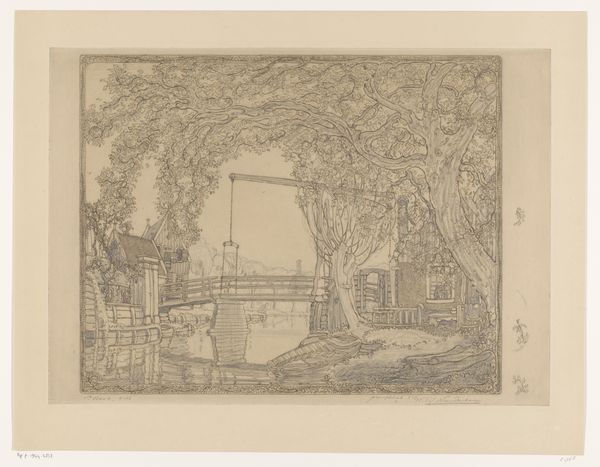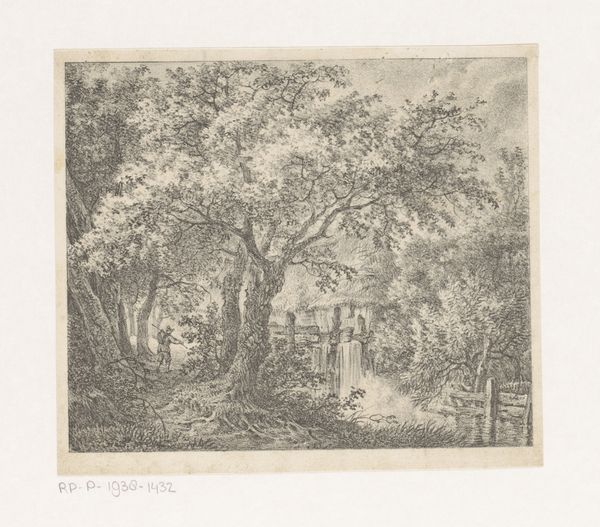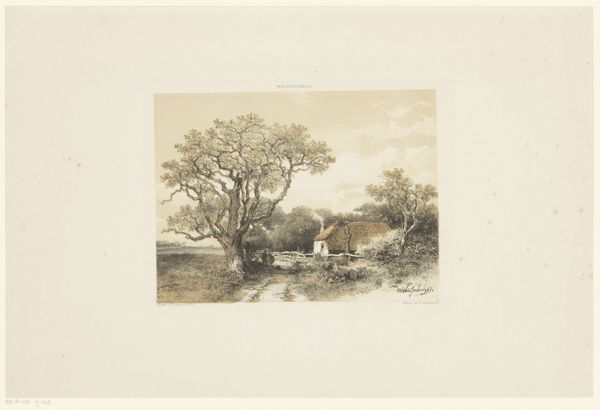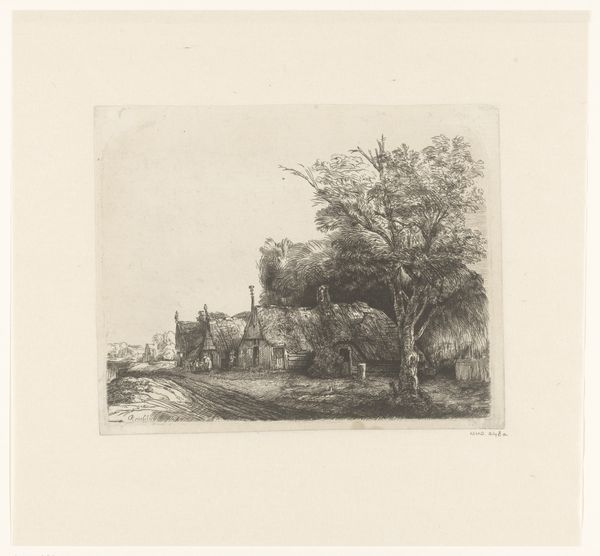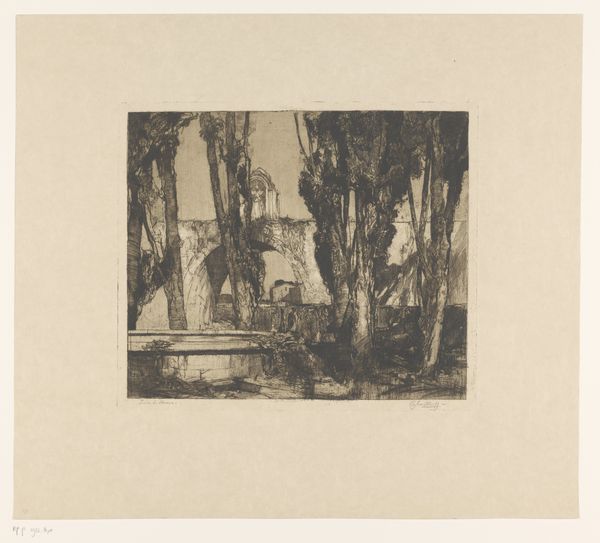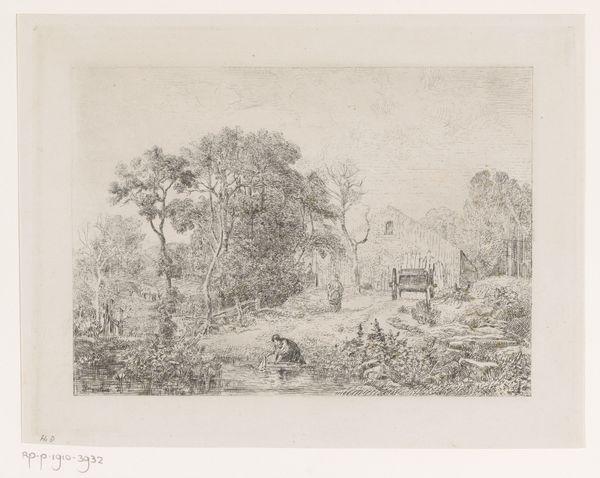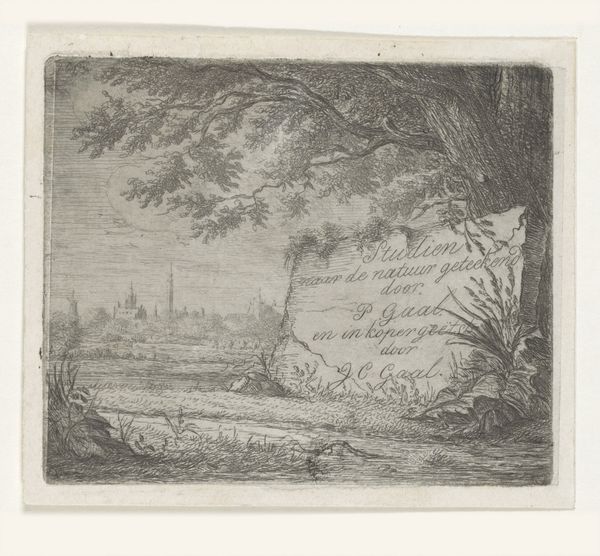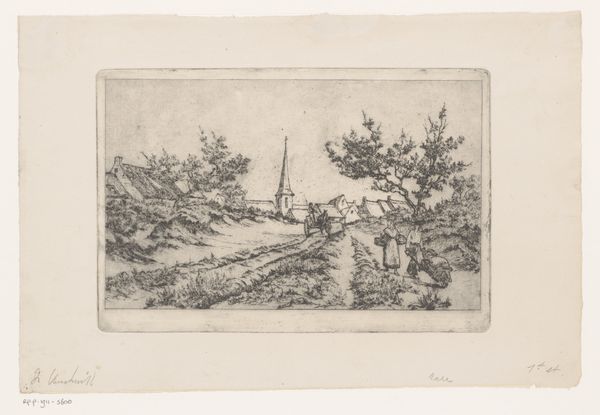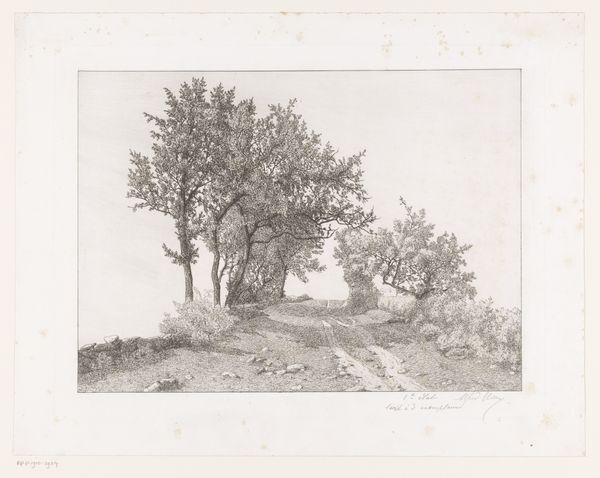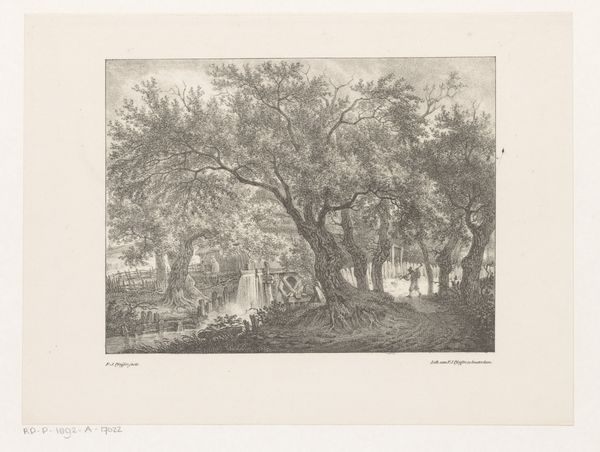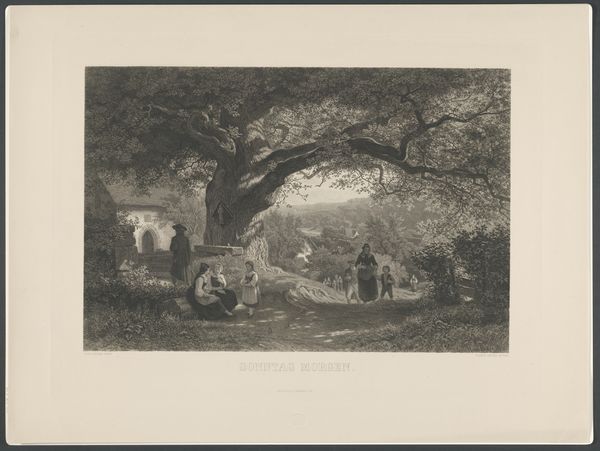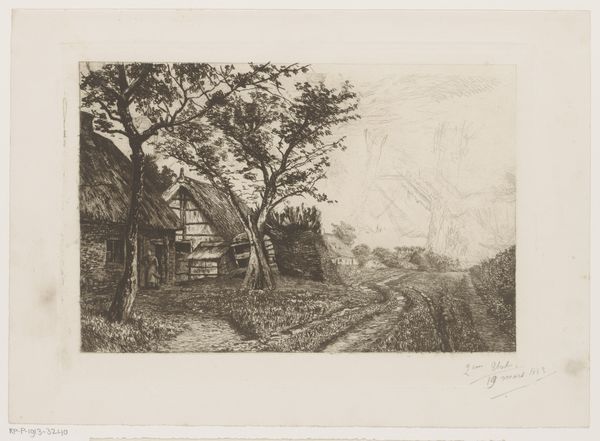
print, etching
# print
#
etching
#
landscape
#
cityscape
Dimensions: height 397 mm, width 488 mm
Copyright: Rijks Museum: Open Domain
Editor: This etching, "De ophaalbrug. Edam" from 1917 by Wijnand Otto Jan Nieuwenkamp, captures a tranquil cityscape scene with an almost dreamlike quality. I'm immediately drawn to the figure of the woman standing on the bridge, a central focal point, despite her small stature. What do you see in this piece, and what can we unpack from this quiet snapshot? Curator: This etching resonates deeply when considered through the lens of early 20th-century anxieties. The seemingly idyllic scene, the quaint bridge, the lone woman - it speaks to the era's complex relationship with industrialization and urbanization. Editor: Could you elaborate? Curator: The detailed rendering of the natural environment against the architectural elements of the town suggests a tension, a potential conflict between nature and society. Consider the woman's placement on the bridge. Is she a passive observer or an active participant in the changing landscape? Also, do you notice how the artist subtly hints at the domestic space behind her? Is this the life that society expects women to lead at that time? Editor: Now that you mention it, the bridge itself acts as a kind of threshold. Do you think there's something to read into this? Curator: Precisely. Bridges historically symbolize transition and connection, but they can also represent division. What does it mean for this woman to be perpetually crossing this physical space, yet remaining isolated? Is this simply an everyday snapshot or a silent commentary on social confinement? Editor: I hadn't considered the historical context so deeply. This makes me think about how societal pressures can be embedded even in seemingly harmless depictions. Curator: Indeed. Art is rarely created in a vacuum. Nieuwenkamp invites us to examine these layered narratives, questioning not only what we see, but also the unspoken realities behind them.
Comments
No comments
Be the first to comment and join the conversation on the ultimate creative platform.
